Dateline – Spring 2021 – Carrollton, Texas
This happen every five or six years or so. Someone in authority takes notice of a Beaver pond located somewhere along the creek that runs through this community, the animals are trapped, the is dam removed or breached, and the water is drained.
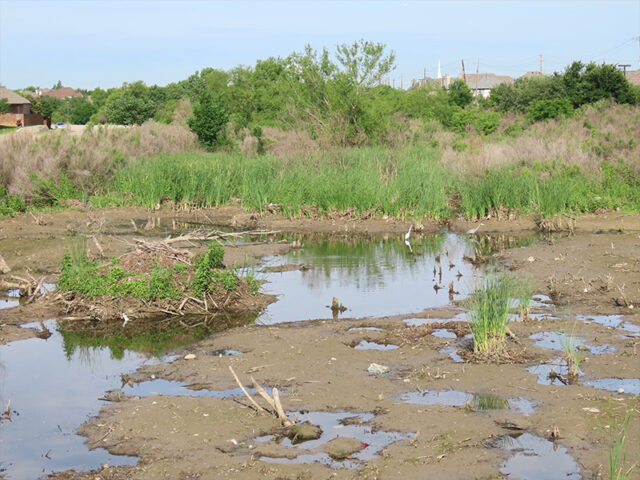
The headwaters of this small creek begin only about a quarter mile east of the location of this former Beaver pond, and consists of a single, large culvert draining street runoff. In this part of town the creek runs for about a mile and a half as it squeezes its way between two fully developed residential subdivisions. The creek flows through a wide man-made channel on its way to the mighty Trinity a few more miles to the west. The creek has been allowed to go feral, and is filled with dense vegetation consisting largely of Cattail reeds, Poverty Weed, Black Willows, and other water tolerant plants.
Beavers have been active on this creek for decades. Over the years there has been as many as four active Beaver dam operating on this stretch of creek at the same time. There is almost always at least one. Several times over the last two decades an effort has been made to remove Beavers. In one instance the city even had earth-movers down in the channel in order to completely dismantle the Beaver’s handiwork.
Ironically, this is such good Beaver habitat that it is usually only a season or two before a new set of the intrepid rodents move in an re-establish a homestead.

They had not yet finished clearing the pond of reeds at this time.
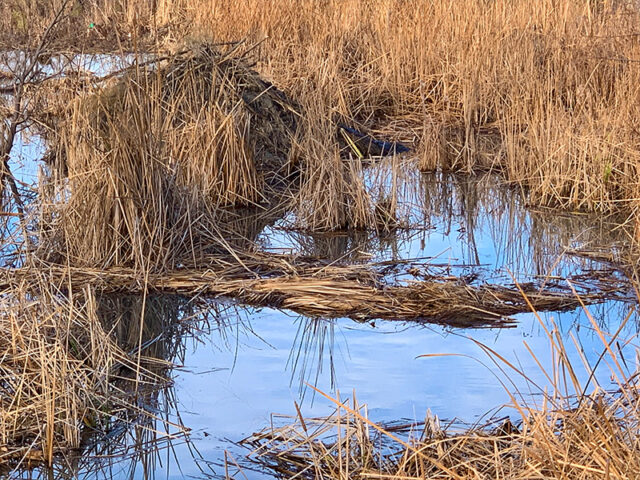
There are a good number of people in North Texas who seem to believe that just because the Beavers are present, something must be done about them. It appears that the decision to remove these Beavers and drain the pond was likely a case where only the opinions and concerns of a limited set of people were heard and considered. I don’t believe that many folks who might have liked to see the Beavers stay were invited to weigh in.
To my knowledge, the Beavers were not causing any serious issues now or at any time in the past. In fact, the pond had become quite a nice ecosystem, which included many kinds of native wildlife that you would not ordinarily find in a suburban neighborhood. The lists of animals making use of habitat includes: Raccoons, Coyotes, Bobcats, Striped Skunks, Herons and Egrets, Anhingas, Canada Geese, Gadwall, Mallards, Belted Kingfishers, Eastern Phoebes, Barn Swallows, Cliff Swallows, Cooper’s Hawks, Red-shouldered Hawks, Wilson’s Snipes, various turtles, and numerous others.
One upside to all of this—if you’d like to look for one—is that with the water removed, we now have the opportunity to get a look at parts of the Beaver lodge and pond that would not ordinarily be visible. Of particular interest are the multiple entrances into the lodge. These access points would have been under water when the pond was full, and the Beavers would have accessed them while submerged.
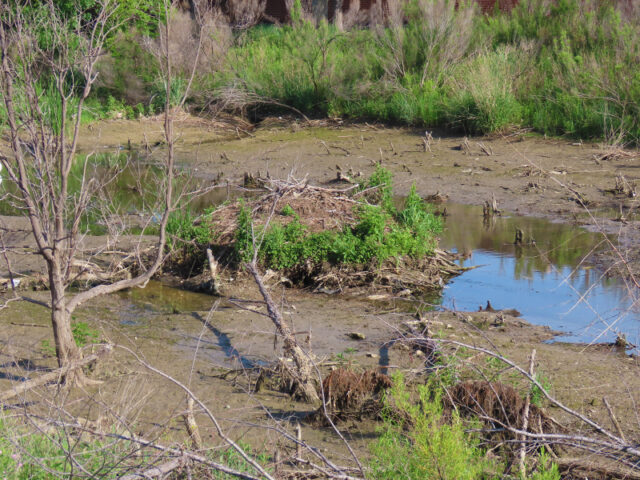
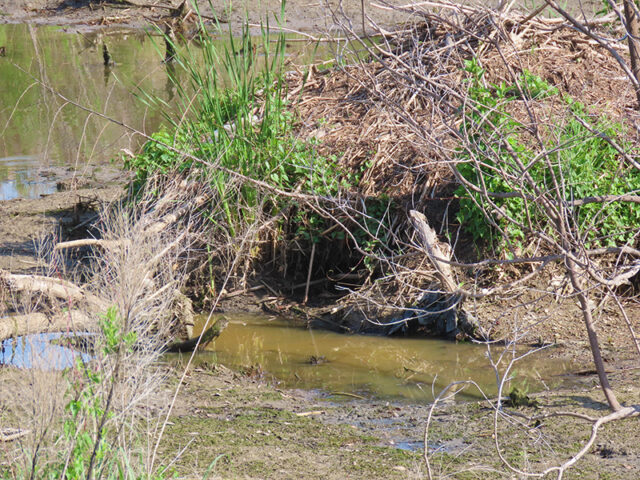


It only took the removal of a small section of the dam in order to drain the pond. Digging out a square-cut portion of the dam—just a little over a foot wide and inline with the deepest part of the old creek channel—is all that was required. Once the dam was breached, the pond water drained away quickly, leaving an expansive mudflat behind.

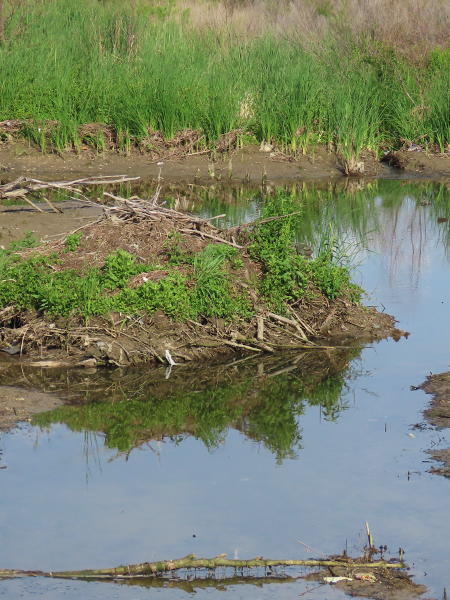
in the background of this photograph near the top right
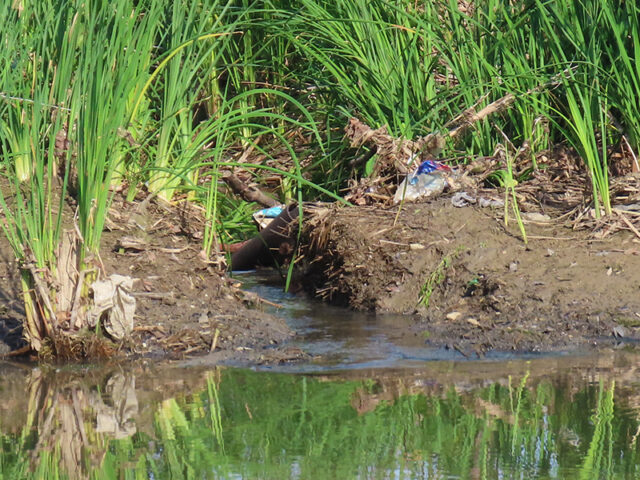
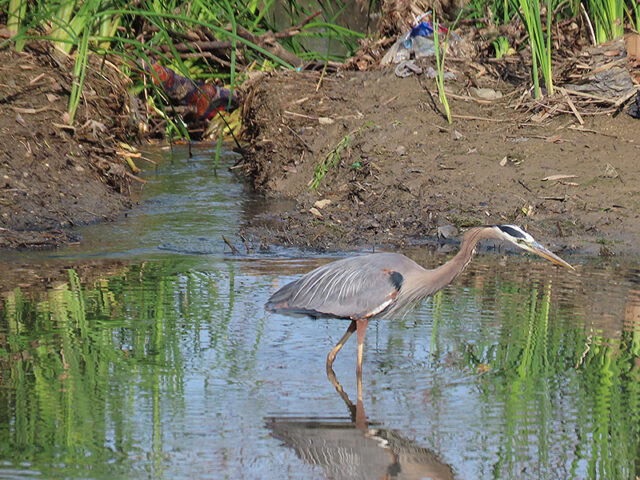
Here a Great Blue Heron hunts next to the square cut section of missing Beaver dam

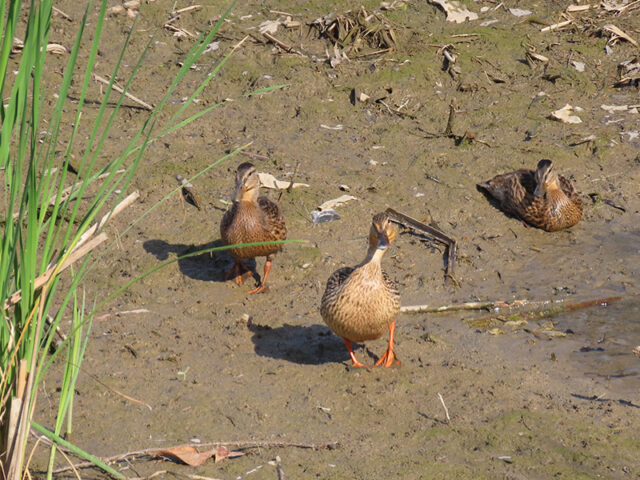
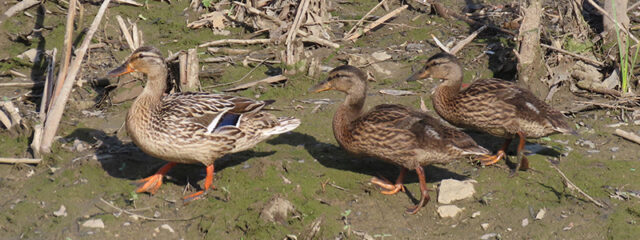
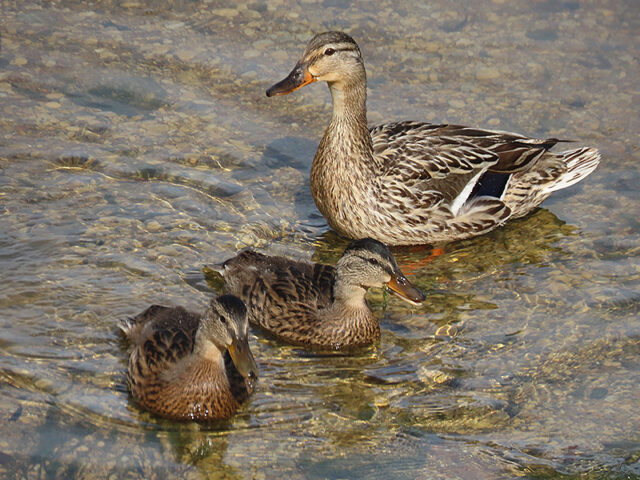
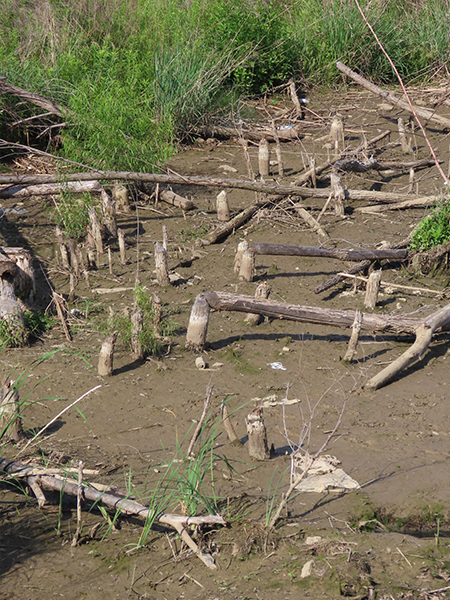
exposed by the absence of water
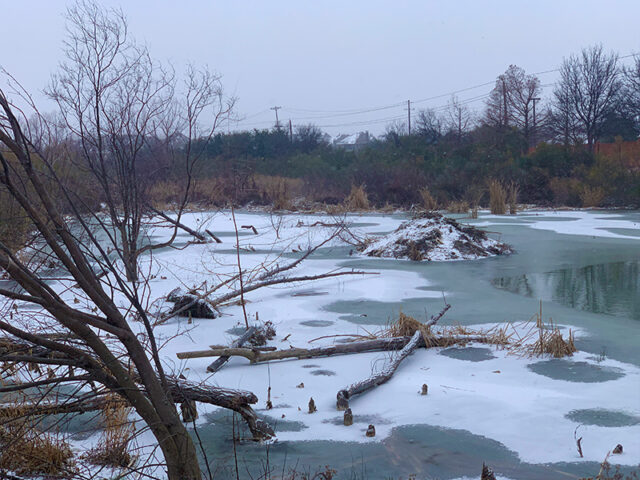
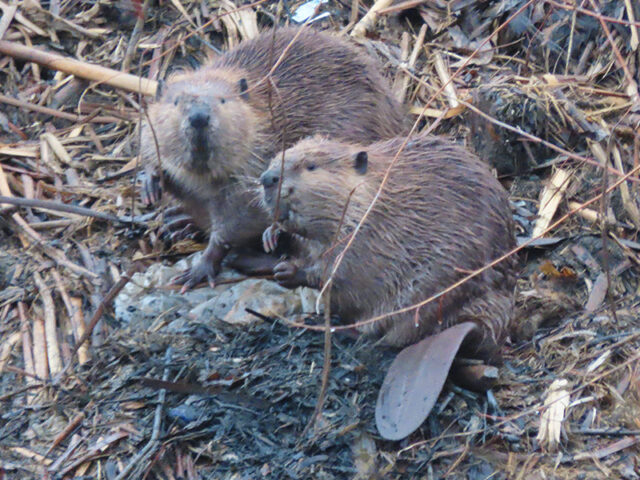
engaged in early spring courtship behavior




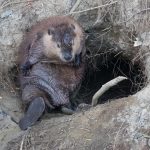


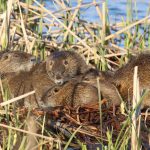
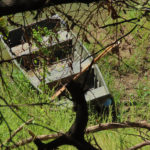
Chris, who did this? Private party, city officials? Is what is left considered more valuable than what was destroyed? Were there still beavers there when the dam was breached? The animals would typically quickly locate and repair damage to a dam, but I suppose determined action could overcome the beaver’s efforts.
I know that property owners sometimes object to beavers because they fear they will destroy trees. They rarely cut trees any significant distance from the waterway, however. And as you have observed, their foods in N Texas more often consist of herbaceous plants, so the wood they take is for mainly construction.
Hi David,
I’m not sure who did this. The creek flows through a city park, so I suspect city services. But it may have also been the neighborhood HOA, or maybe both working in conjunction. This set of Beavers had been present at this location for a few years before they were removed. I’m not sure what motivated the action. I had not noticed any problems or issues of consequence caused by the Beavers. It may have been just because somebody in authority finally noticed.
It appears the Beavers were trapped and removed before the dam was breached. The cut is very precise and inline with the existing channel. It looks like it was dug with a hand shovel, and it shows no signs of the Beavers attempting repairs.
Is what’s left more valuable than what was destroyed? Not in my mind. Case in point… the Beaver pond had attracted a Belted Kingfisher. Very unusual to find those in the middle of suburbia. Without the pond, the kingfisher won’t be coming back.
I’ve found that, despite its many failings, Nextdoor is a good way to communicate with neighbors about community issues. Perhaps a simple educational posting about things like this would serve to enlighten the public and help avoid habitat loss due to ignorance. Im not in that particular area above, but I’d be happy to help assist with my neighborhood’s postings!
Thanks, Chris. Pretty much as I expected. I definitely agree with you regarding such things as the kingfisher. However, I find that many (most?) members of the public seldom notice such creatures, or if they do , it is a passing notice and the absence is then not noted. If there is no Starbucks nearby, they notice that.